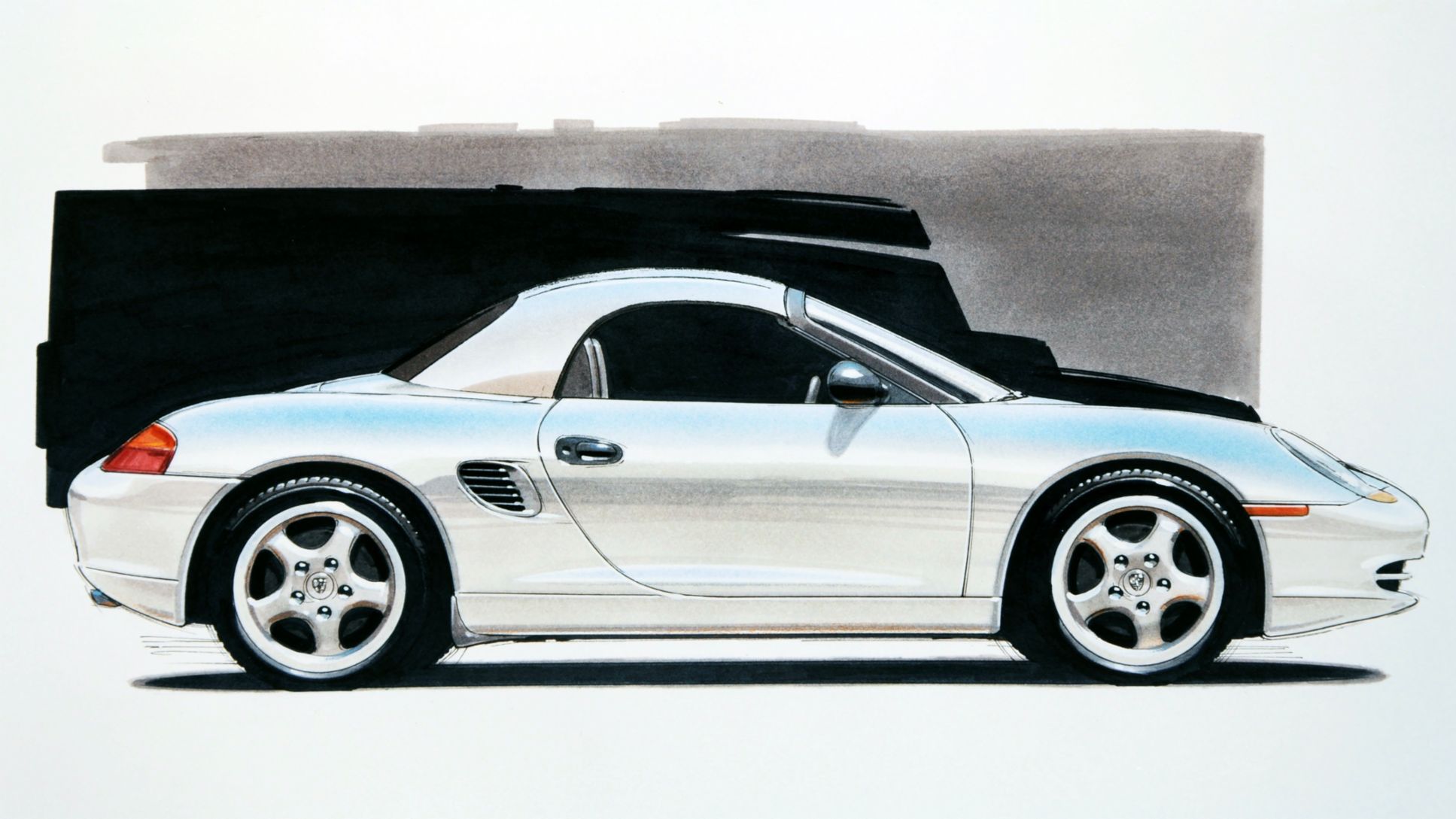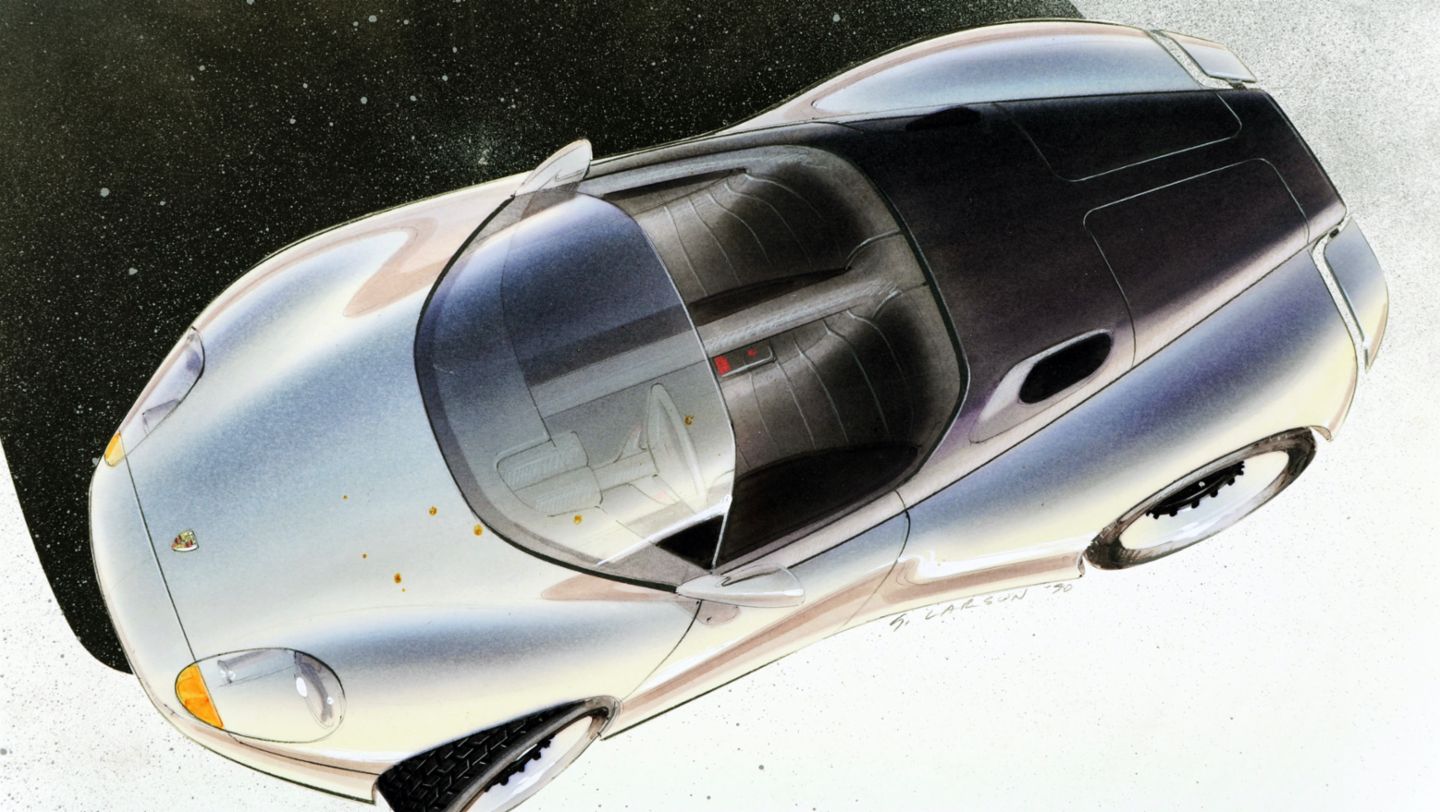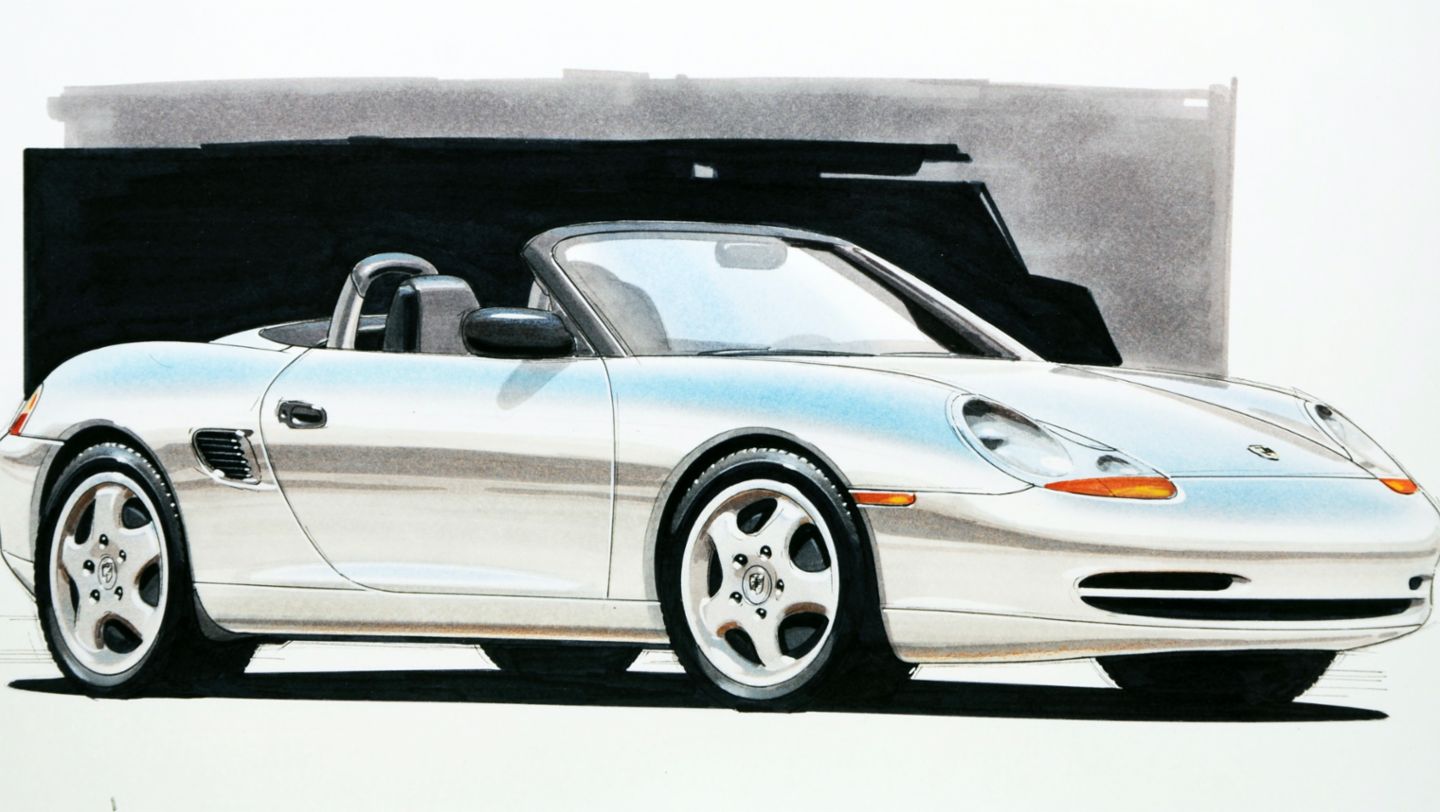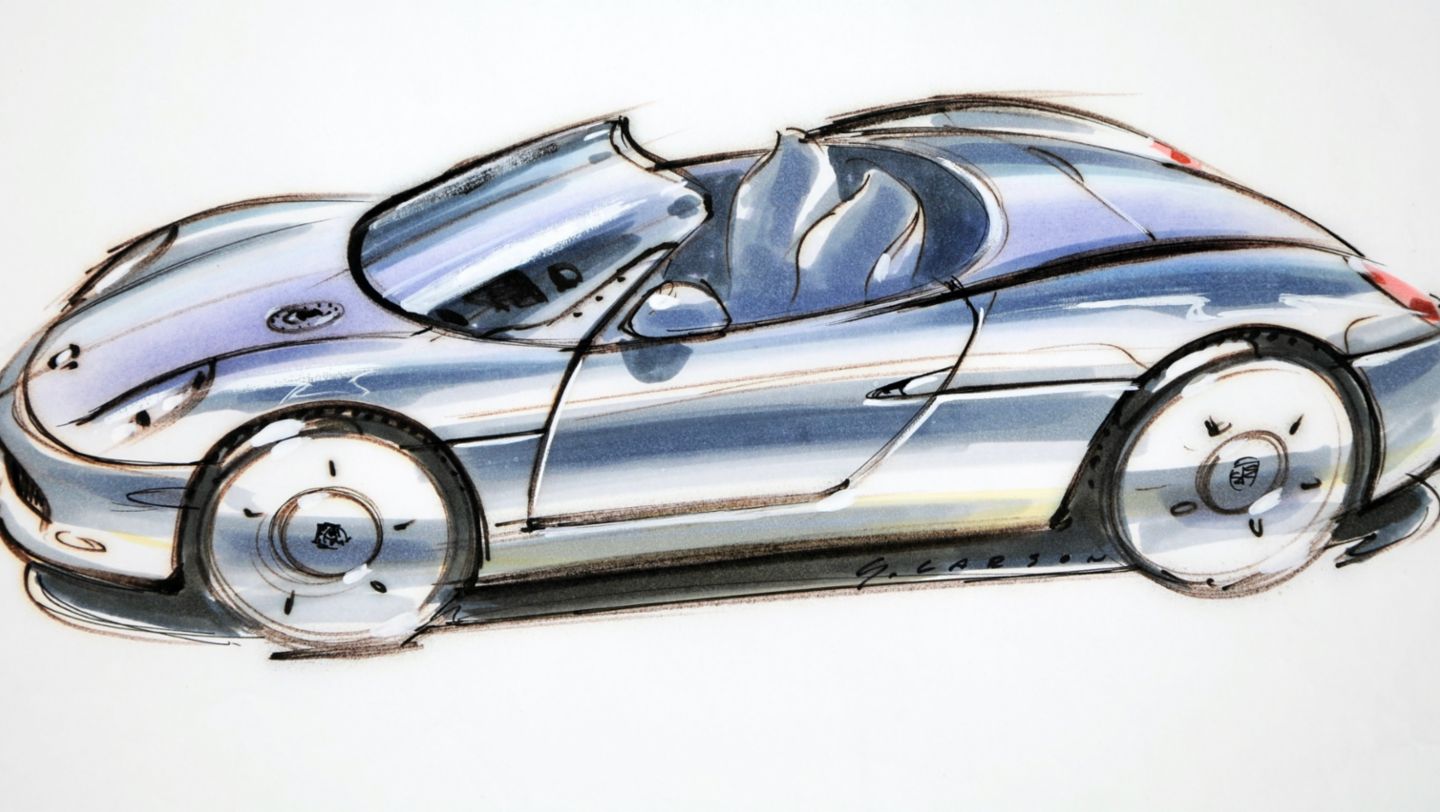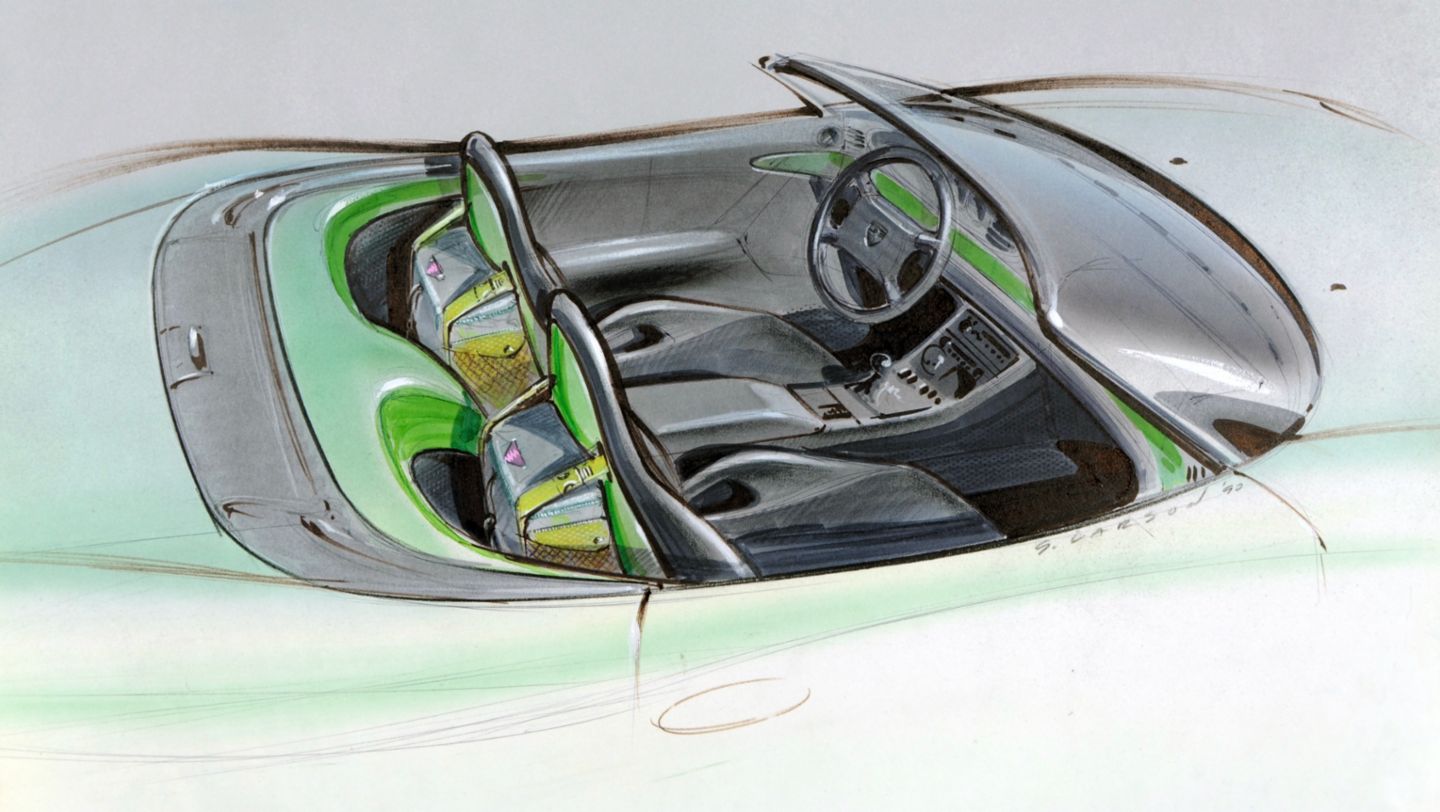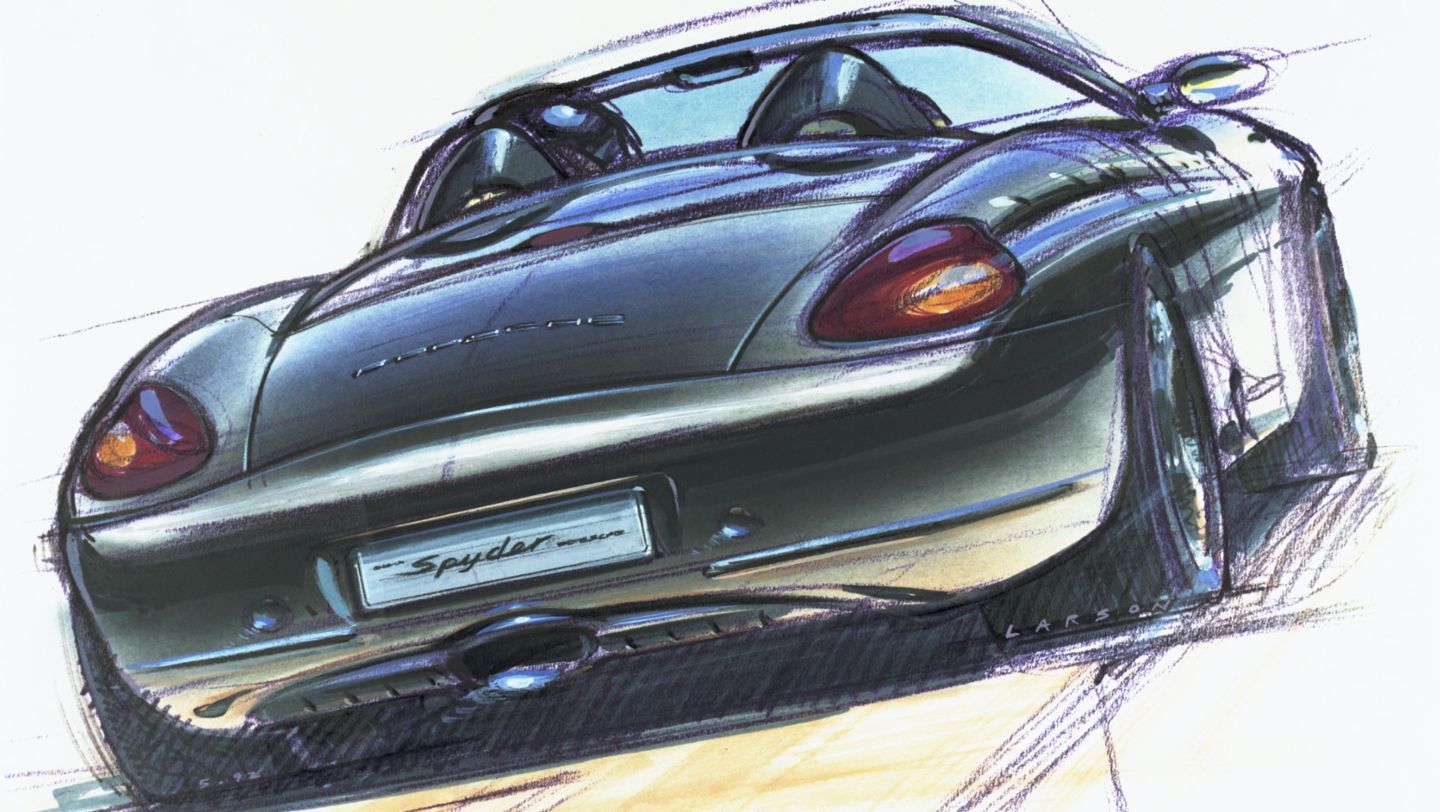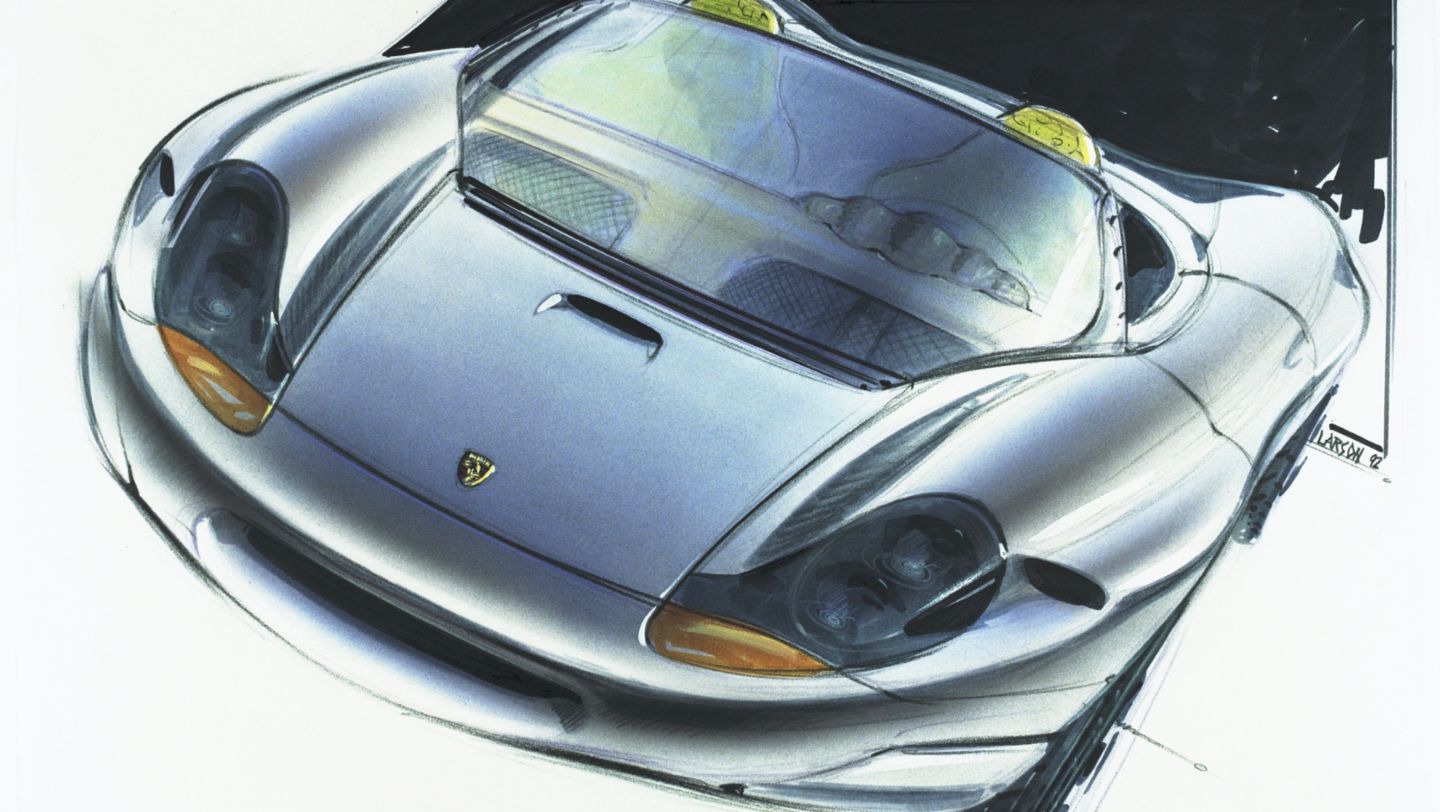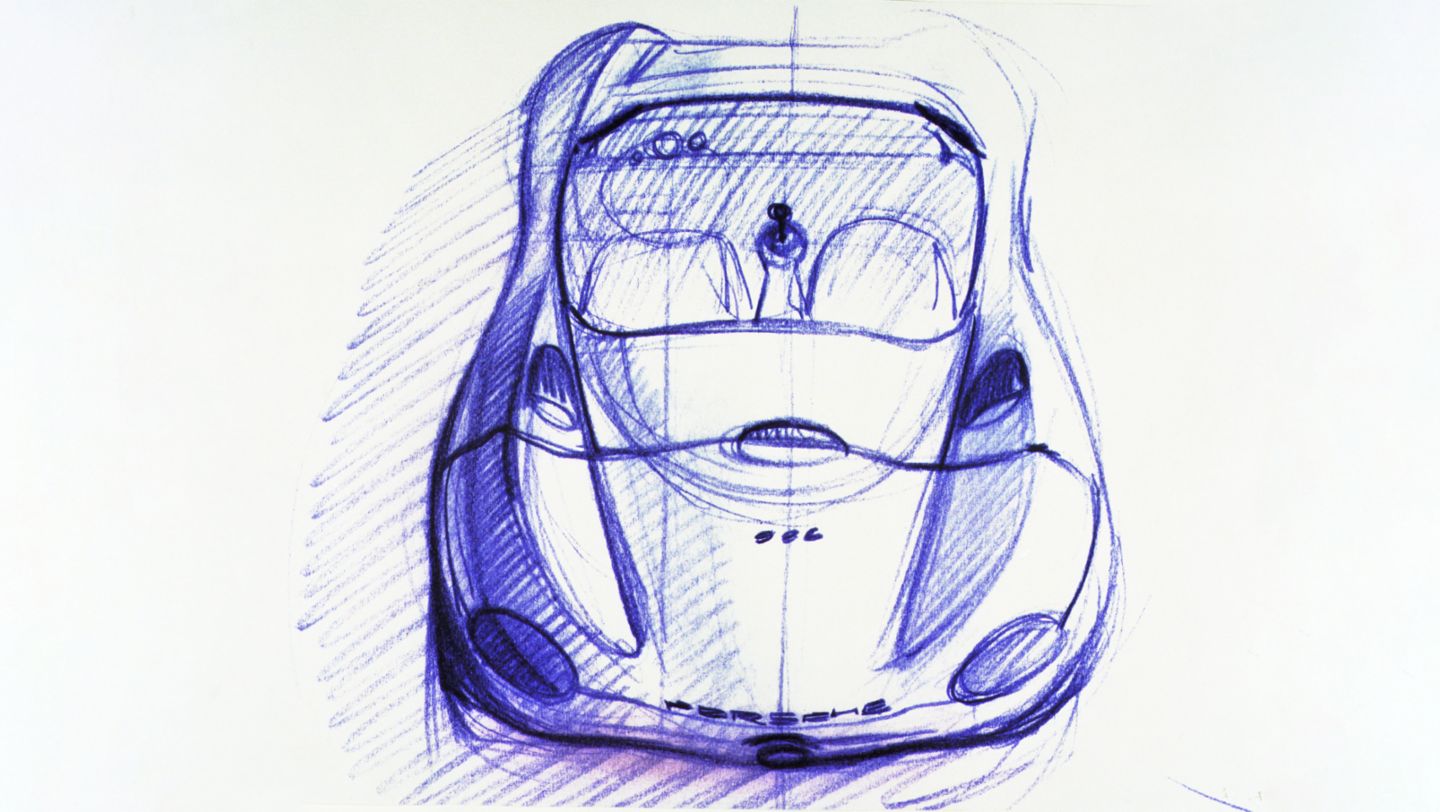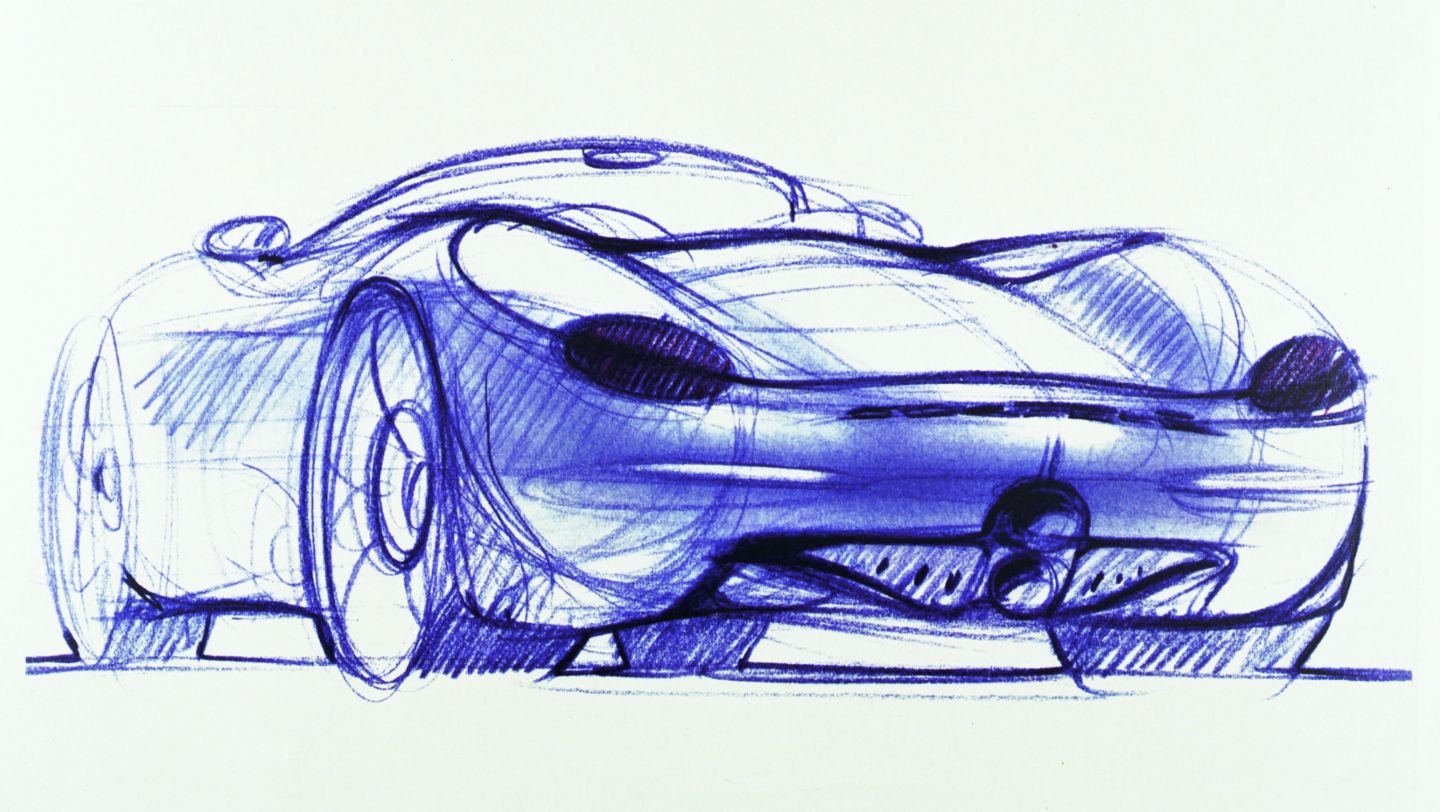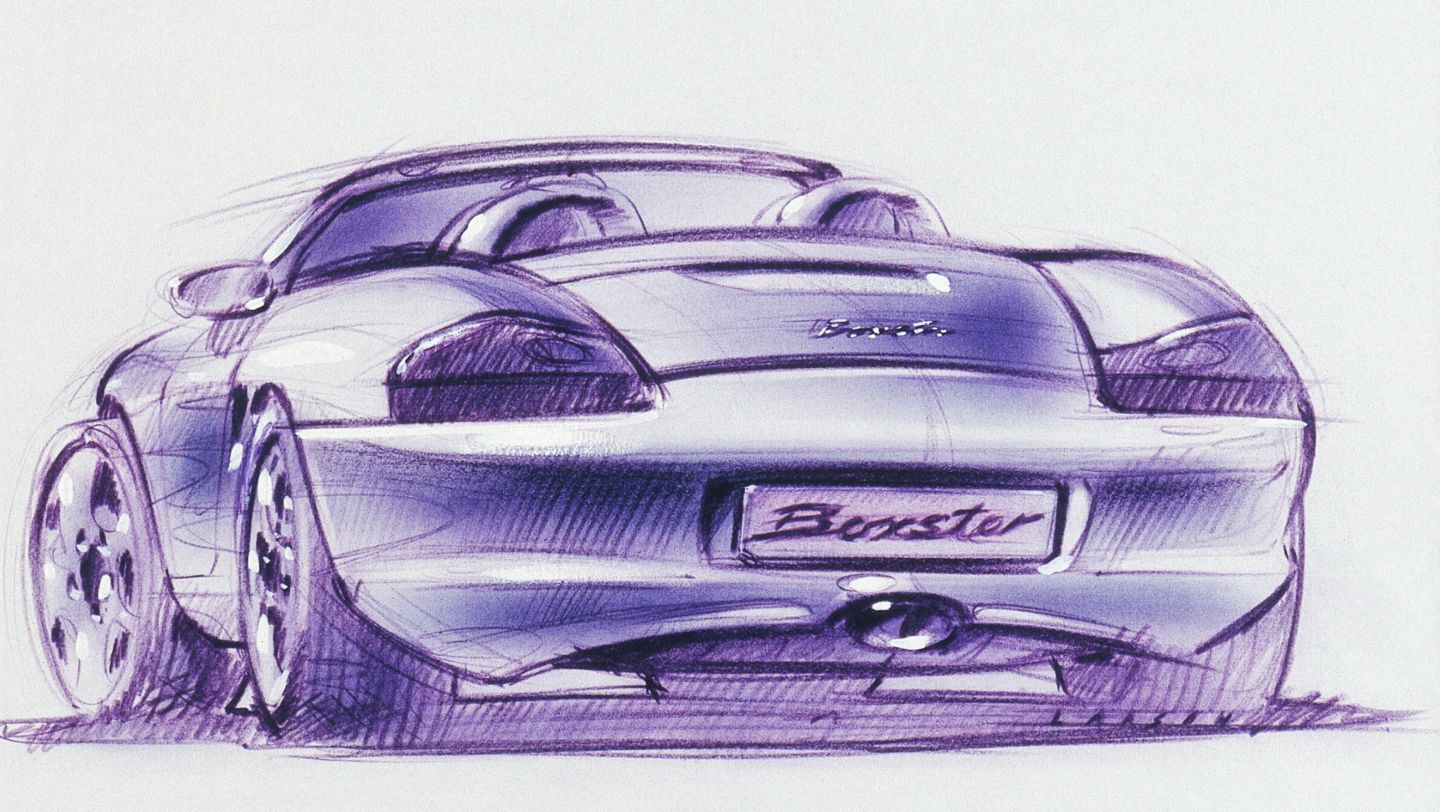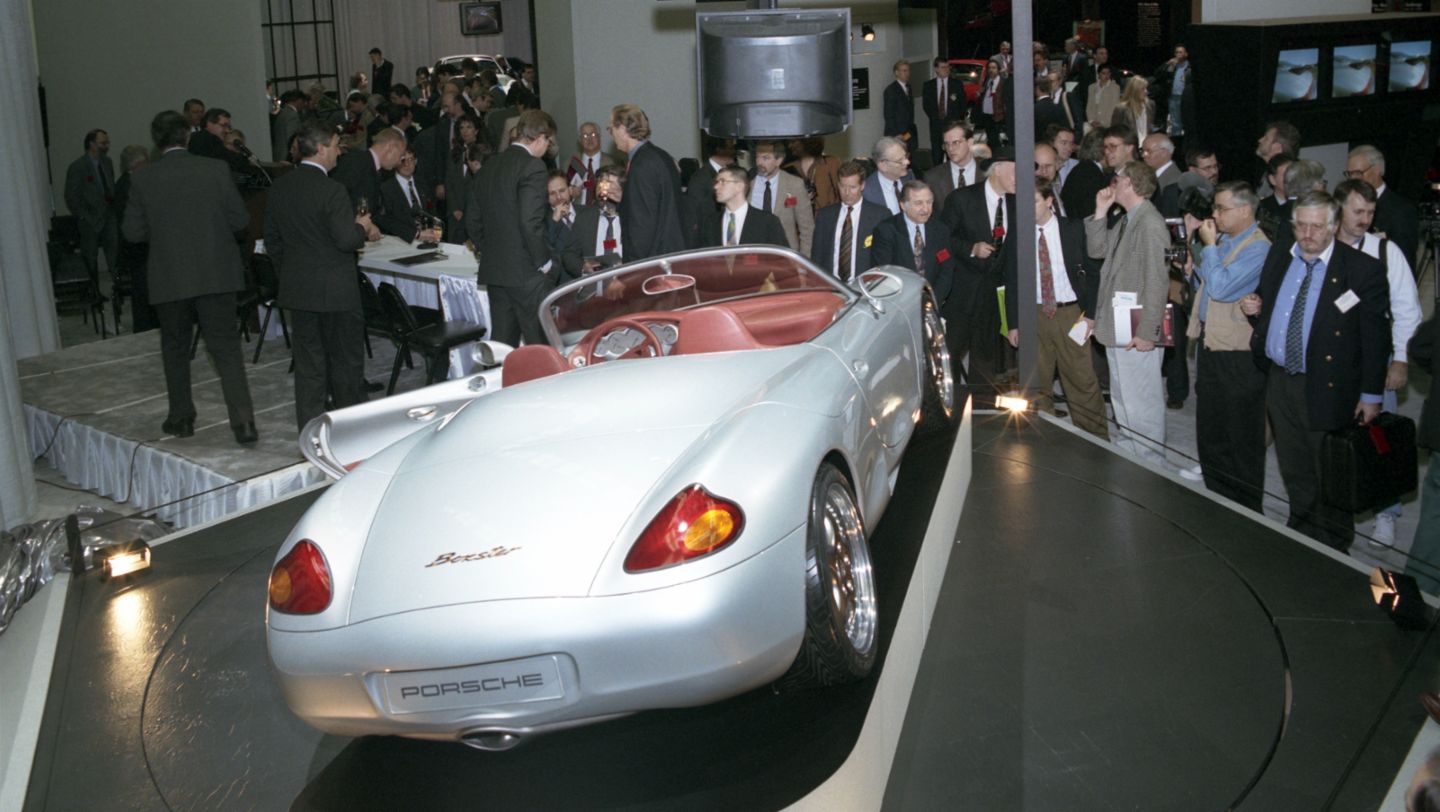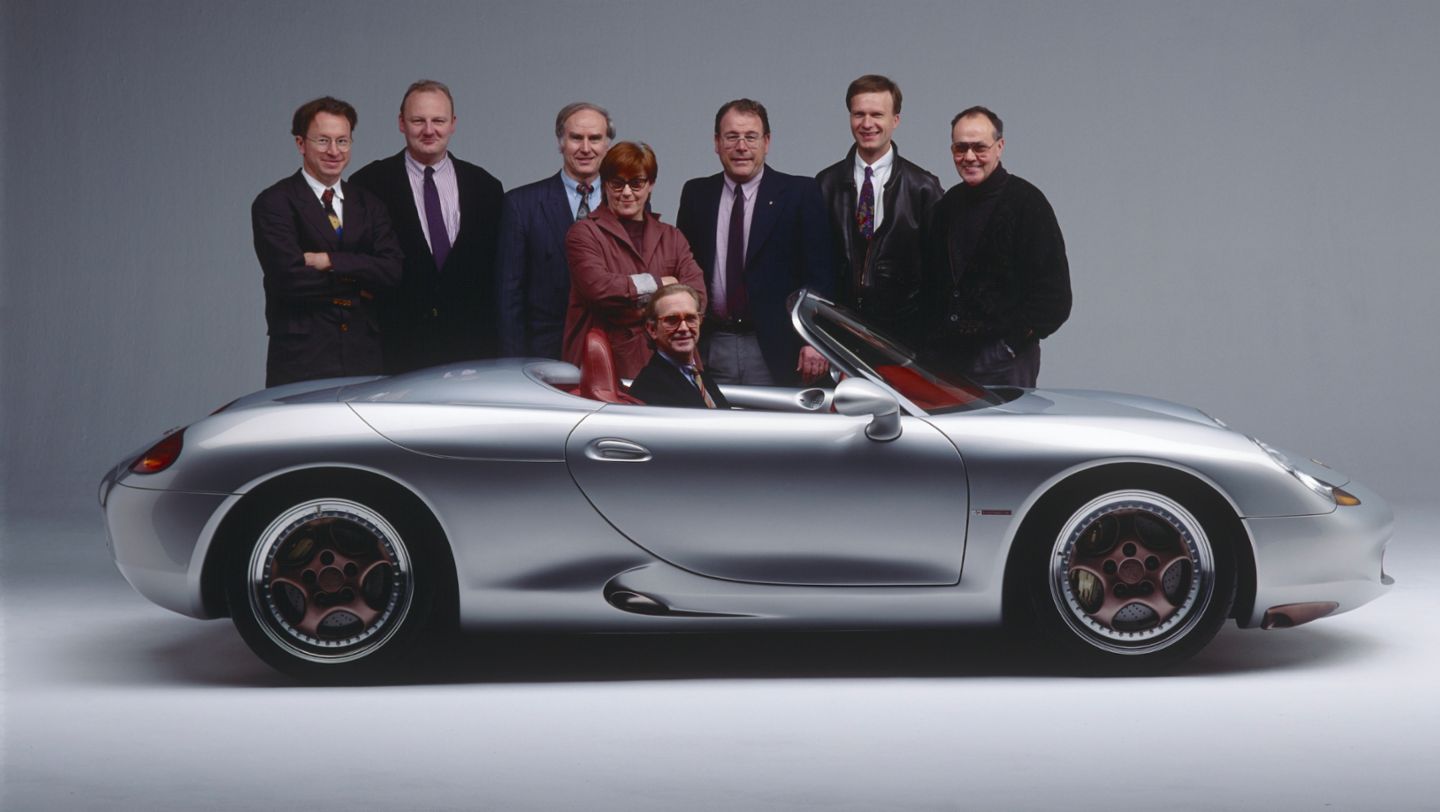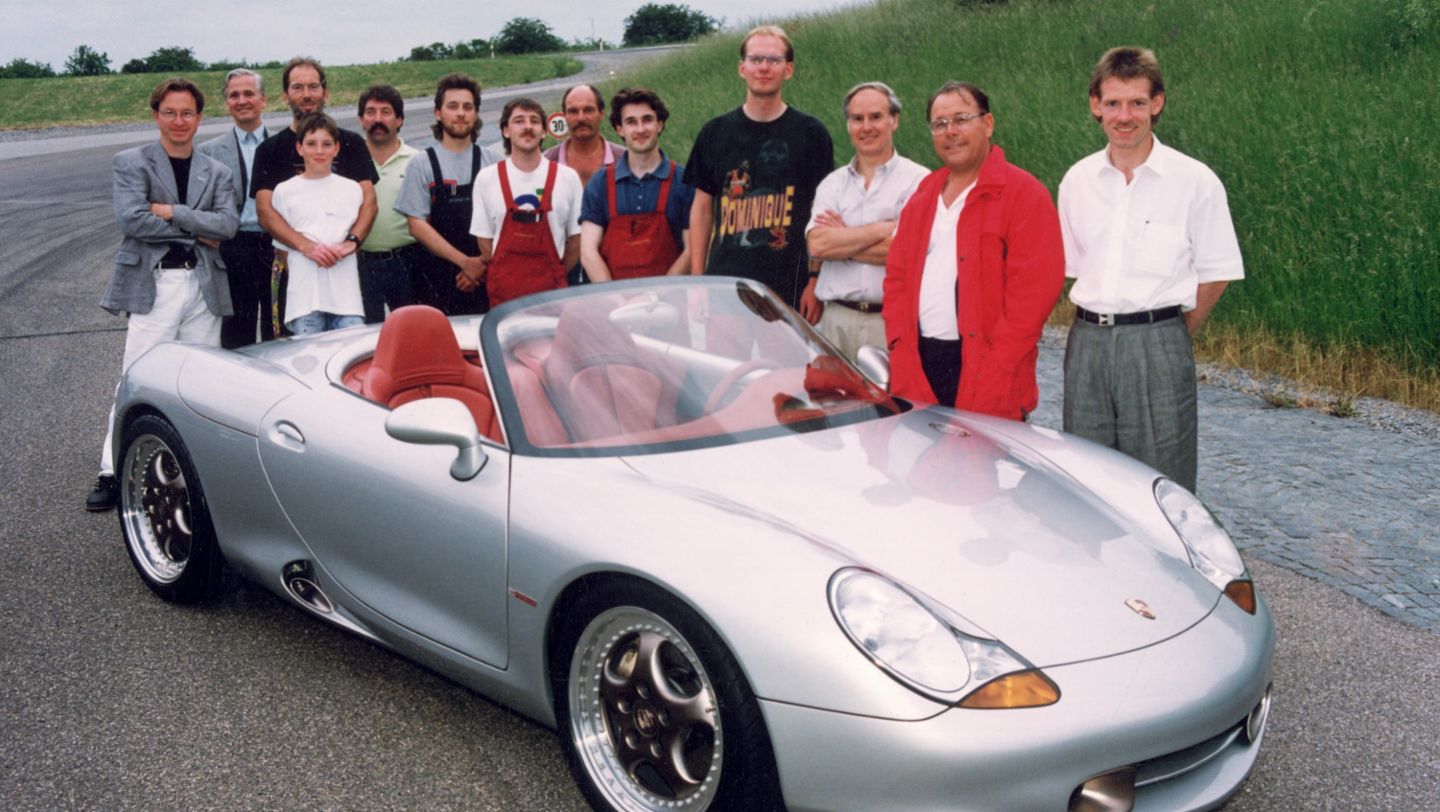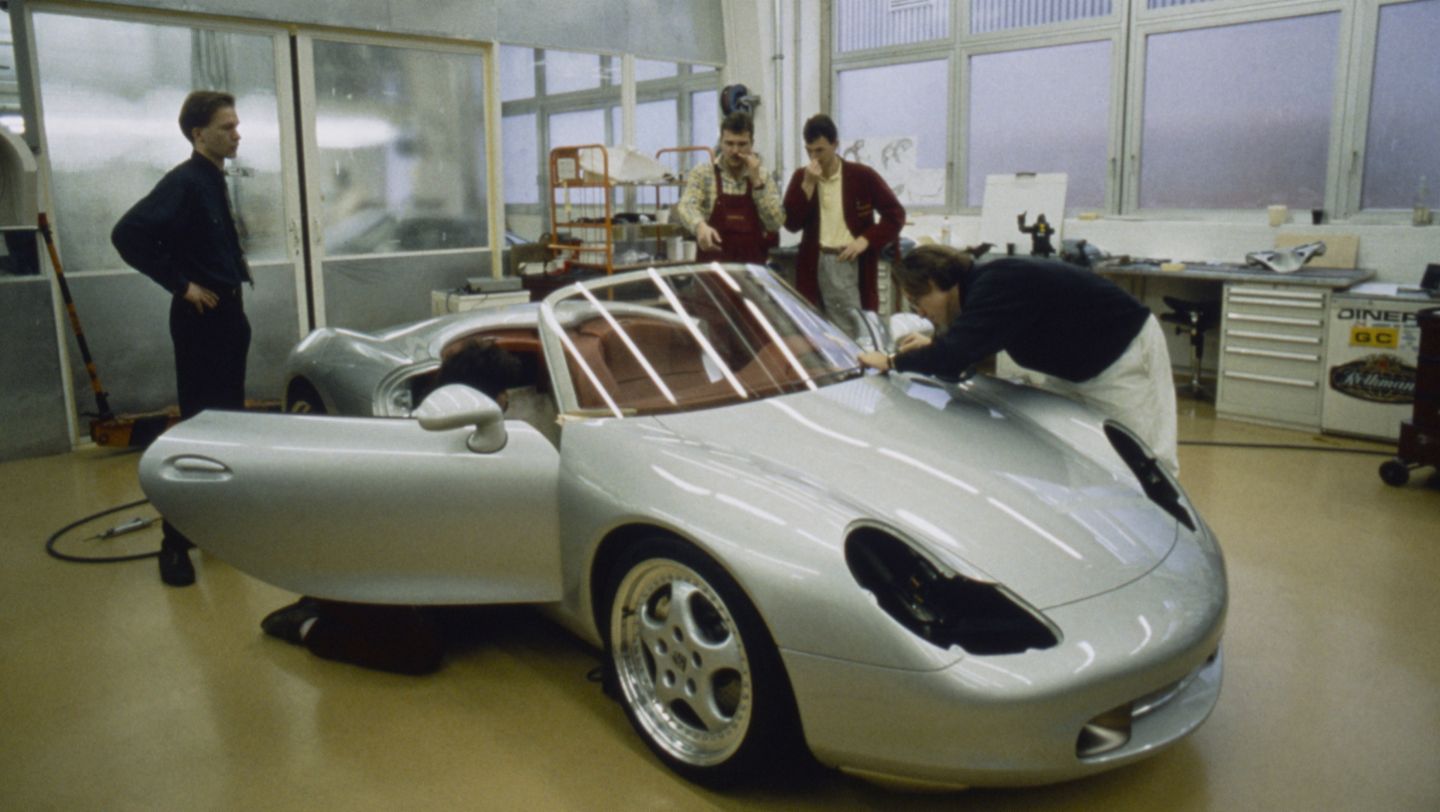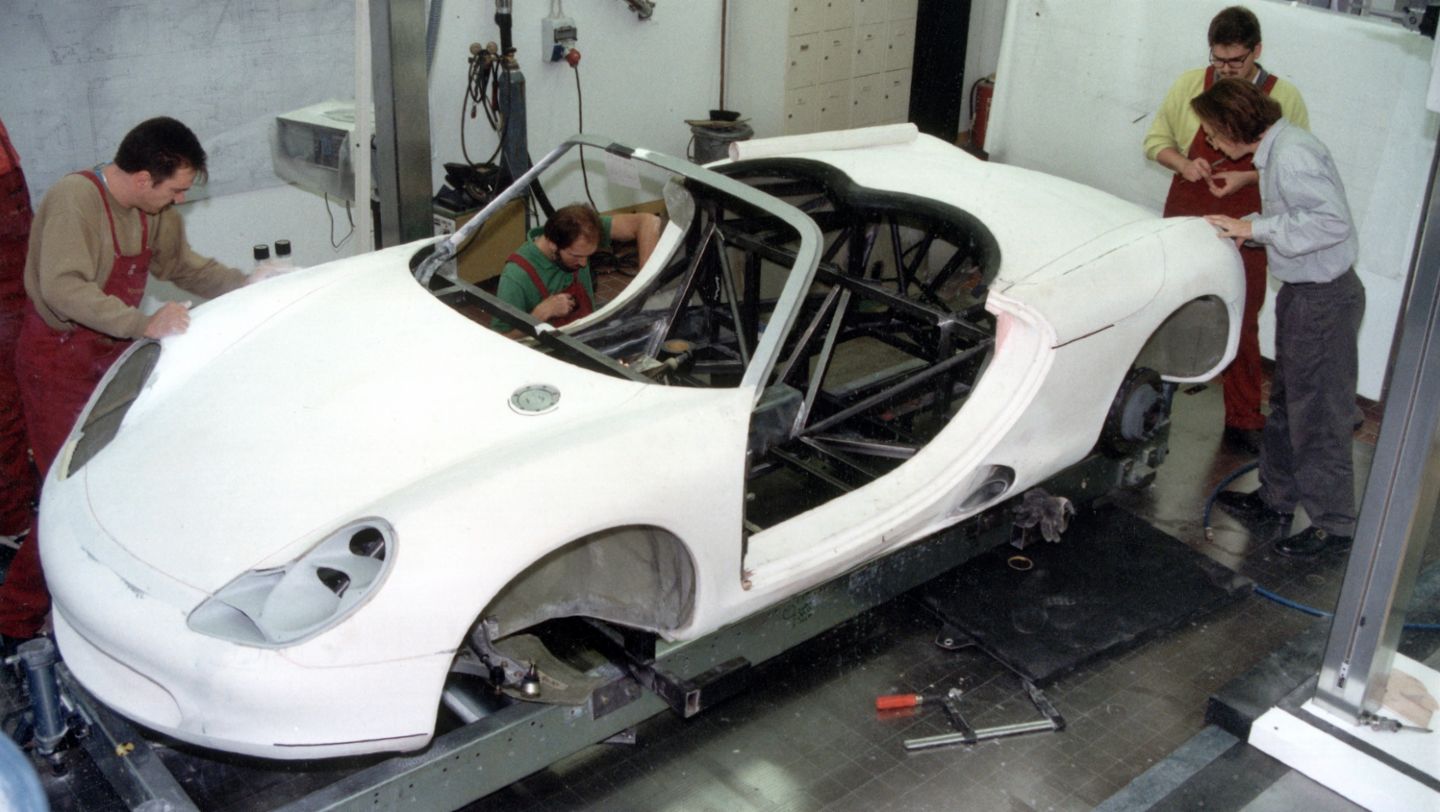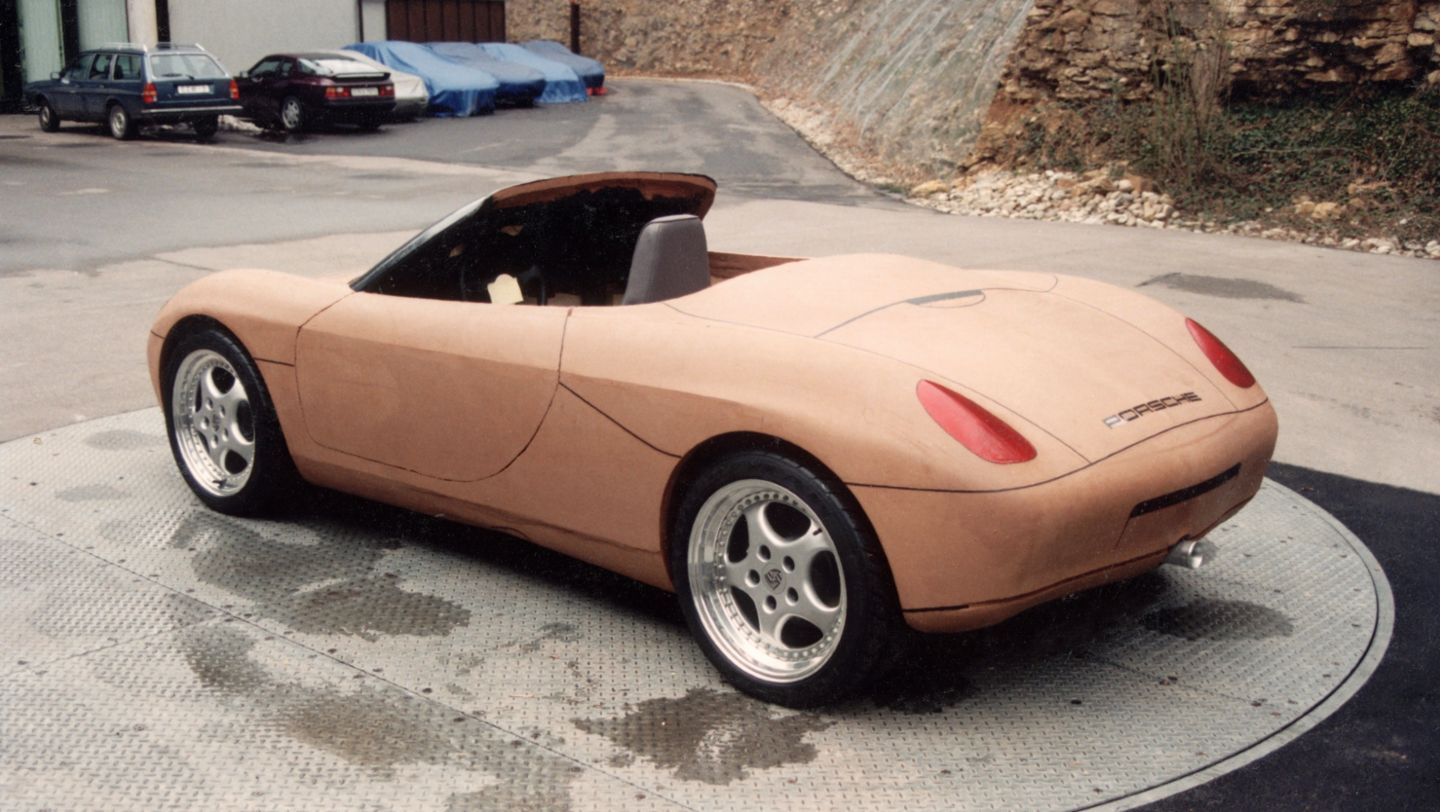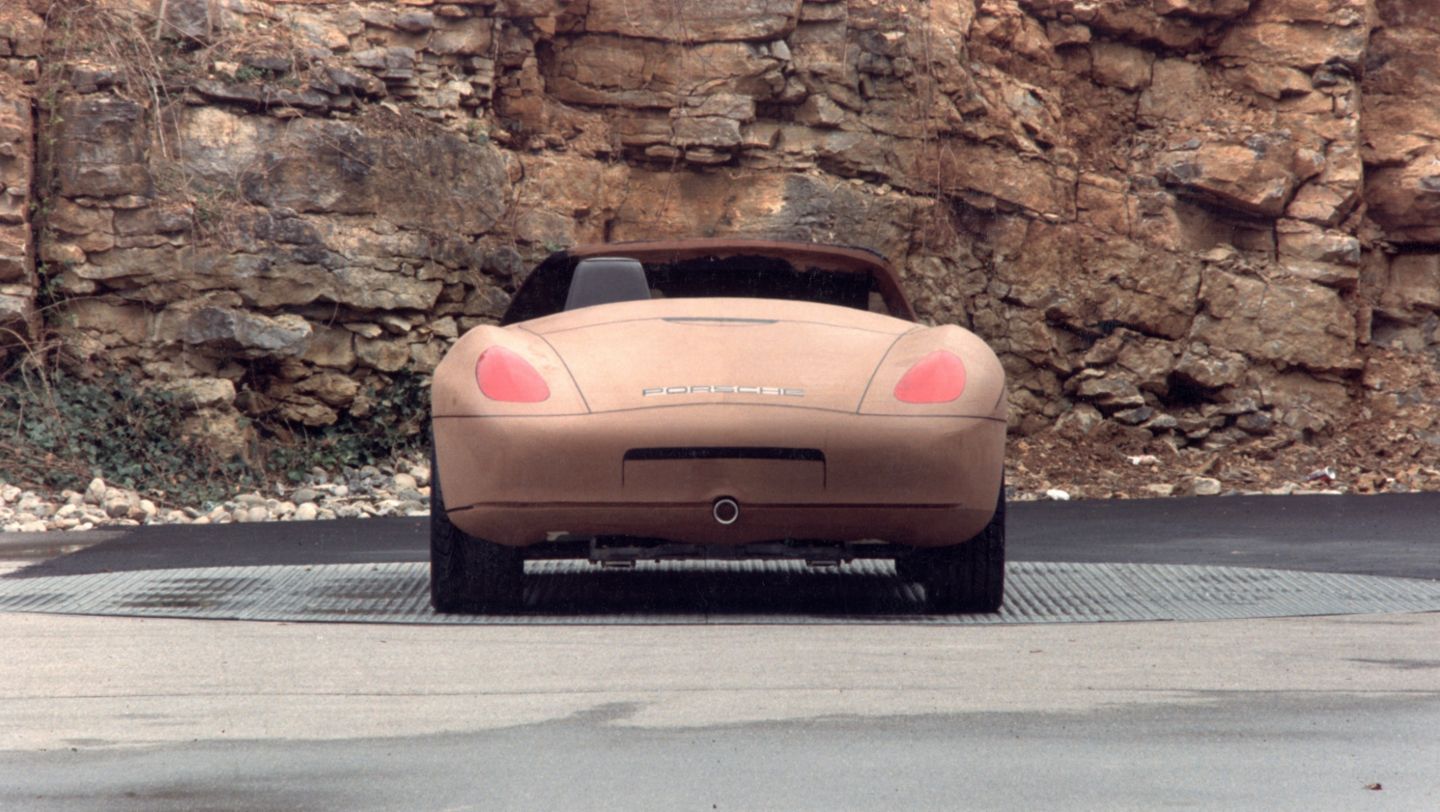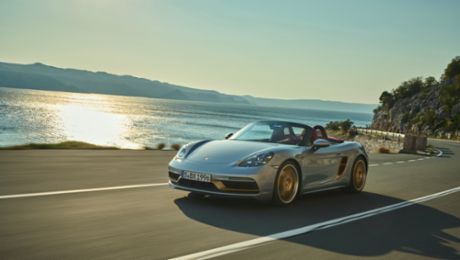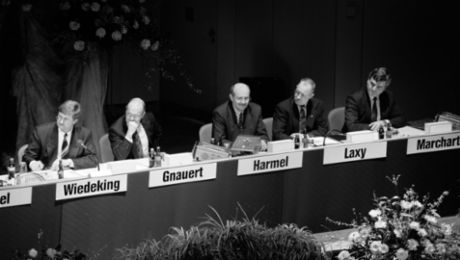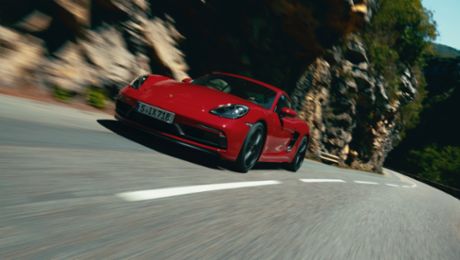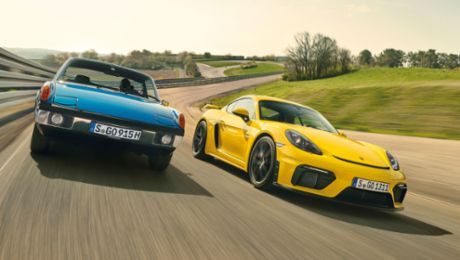A portmanteau of “boxer” and “roadster”, the Boxster name covers both the vehicle category and the boxer engine – the outstanding technical feature that had characterised the 356 since 1948 and the Porsche 911 since 1963.
Grant Larson, today Director Special Projects, was responsible for designing the concept car. The designer remembers: “In October 1991 – I was responsible at the time for advance development in the Design department – I visited the Tokyo Motor Show. Audi presented the Avus Quattro concept car there. At the end of 1991, series development of the Boxster and the 996 was already taking place in other areas, and we decided to build a show car. I had full freedom as regards design. All drafts were produced as 2D drawings. So, not on a screen like today.
“My boss, Harm Lagaaij, really pushed me on the design, above all as regards the detailed forms. We were lucky that we could call on Peter Müller, a fantastic modeller. Instead of using coordinates in the usual way, he worked only with my drawings. Freehand, as it were. We had originally planned to present our concept car in Geneva in spring 1993. But we decided on Detroit in January because we did not want to waste any time. What is more, our focus with the roadster was on the US market, where Porsche was weak at the time, and where Mazda with its Miata and BMW with the Z1 were already present in the roadster segment.”
"We had originally planned to present our concept car in Geneva in spring 1993. But we decided on Detroit in January because we did not want to waste any time." Grant Larson
With the “Boxster” sports car concept designed by Larson, Porsche continued the technical development of its earlier Spyder, Speedster and Roadster sports cars, and intentionally included references to the 550 Spyder and the 718 RS 60 from the 1950s. The mid-engine concept, short body overhang at the rear, front end extending well beyond the front axle and centrally positioned exhaust tailpipe: all these were characteristic features of both the forebears and the concept car. Distinctive air intakes and air outlet openings were important design elements, as were the headlights with innovative lighting technology and also the tail lights and direction indicators. The interior was designed to match, with metal painted in the exterior colour used on the door panels, instrument carrier and centre console.
The “Boxster” received an overwhelmingly positive response from the public and experts, and this did not remain without consequences for development. Grant Larson: “Shortly after the presentation in Detroit, we were instructed to stop series design development for the Boxster immediately. The instruction instead was: “Please build the concept exactly like that”.”
